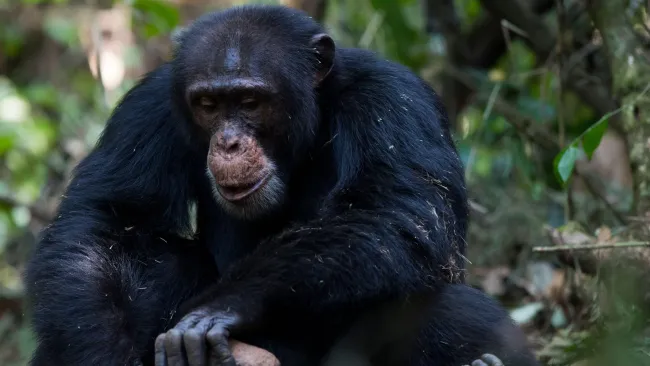Orcas have been spotted hunting down an unexpected dinner off the coast of Chile in a particularly brutal way.
The matriarch of this orca pod was seen flinging a dusky dolphin into the air during the hunt, with the rest of the pod sharing food, according to a paper in the journal Frontiers in Marine Science.
These details about the feeding habits of the pod could help researchers figure out how this Chilean population is linked to others around the Southern Hemisphere and facilitate conservation efforts.
"Studying orcas in their natural environment is very challenging as they are marine top predators, traveling long distances and living offshore, which makes observation difficult," said study co-author Ana García Cegarra, a researcher at Chile's University of Antofagasta, in a statement.
"But understanding their role in the marine environment is crucial for the conservation of this poorly-known species in the Humboldt Current," she said.
Orcas have a vast repertoire of sophisticated hunting techniques that vary from pod to pod. They have been previously seen using tail slaps to stun or injure prey, especially fish, and this can be powerful enough to knock the prey out of the water, sometimes stunning or killing it instantly.
Other tactics include wave-washing, where a group of orcas will work together to create waves by swimming rapidly toward an ice floe where a seal is resting, washing the seal off the ice and into the water. In group attacks, multiple orcas will hunt larger prey, such as blue whales or gray whales, in coordinated groups, often targeting young or weak individuals and working together to exhaust the prey.
While orcas as a species are not classified as endangered globally, certain populations face significant threats because of their reliance on specific prey, exposure to human activities or habitat degradation.
Different orca populations have different diets. Some eat fish exclusively, while others prefer larger animals like seals and even whales. In the Southern Hemisphere, there are five different ecotypes of orca, with those named Type A and Type B1 orcas preferring marine mammals.
The researchers wrote in the paper: "In the southern hemisphere, scientific efforts focus mainly on Antarctic and subantarctic waters and foraging strategies as described in the Type A ecotype (i.e., specialty on Antarctic minke whales, Balaenoptera bonaerensis, and southern elephant seals, Mirounga leonina).
"Type B1 orcas forage on Weddell seals (Leptonychotesw eddellii), while the Type B2 forage on penguins and fish," they continued. "Type C forages on Antarctic toothfish (Dissostichus mawsoni) and type D on fish from longlines."
This Humboldt Current population has never been seen hunting before, so the discovery that they hunt dolphins indicates they may belong to the mammal-hunting Type A ecotype.
"We wish we could obtain skin biopsy samples to analyze their genetic data, as there is no genetic information for orcas in this region of the southeast Pacific," said García Cegarra. "However, they are very elusive and intelligent, which makes it difficult to approach them in the boat for biopsies."
Because the orcas were seen sharing their kills within the pod, this is another indication they may be part of Type A since Type A orcas have been seen to share meat with relatives.
"The fact that we have observed newborn calves is important, because it indicates that they are having offspring, but we don't know their survival rate," García Cegarra said. "Thanks to citizen science, we can follow the presence of killer whales along thousands of kilometers of the coast of northern Chile—but most orca sightings are opportunistic."
Do you have a tip on a science story that Newsweek should be covering? Do you have a question about orcas? Let us know via science@newsweek.com.
Reference
García-Cegarra Ana M., Oña Javier, Arancibia Camilo, Aguilar Luis, Toro Frederick. (2024). New records of odontocete and mysticete predation by orcas in the Humboldt current system, South Pacific Ocean. Frontiers in Marine Science. https://doi.org/10.3389/fmars.2024.1450624
Disclaimer: The copyright of this article belongs to the original author. Reposting this article is solely for the purpose of information dissemination and does not constitute any investment advice. If there is any infringement, please contact us immediately. We will make corrections or deletions as necessary. Thank you.





